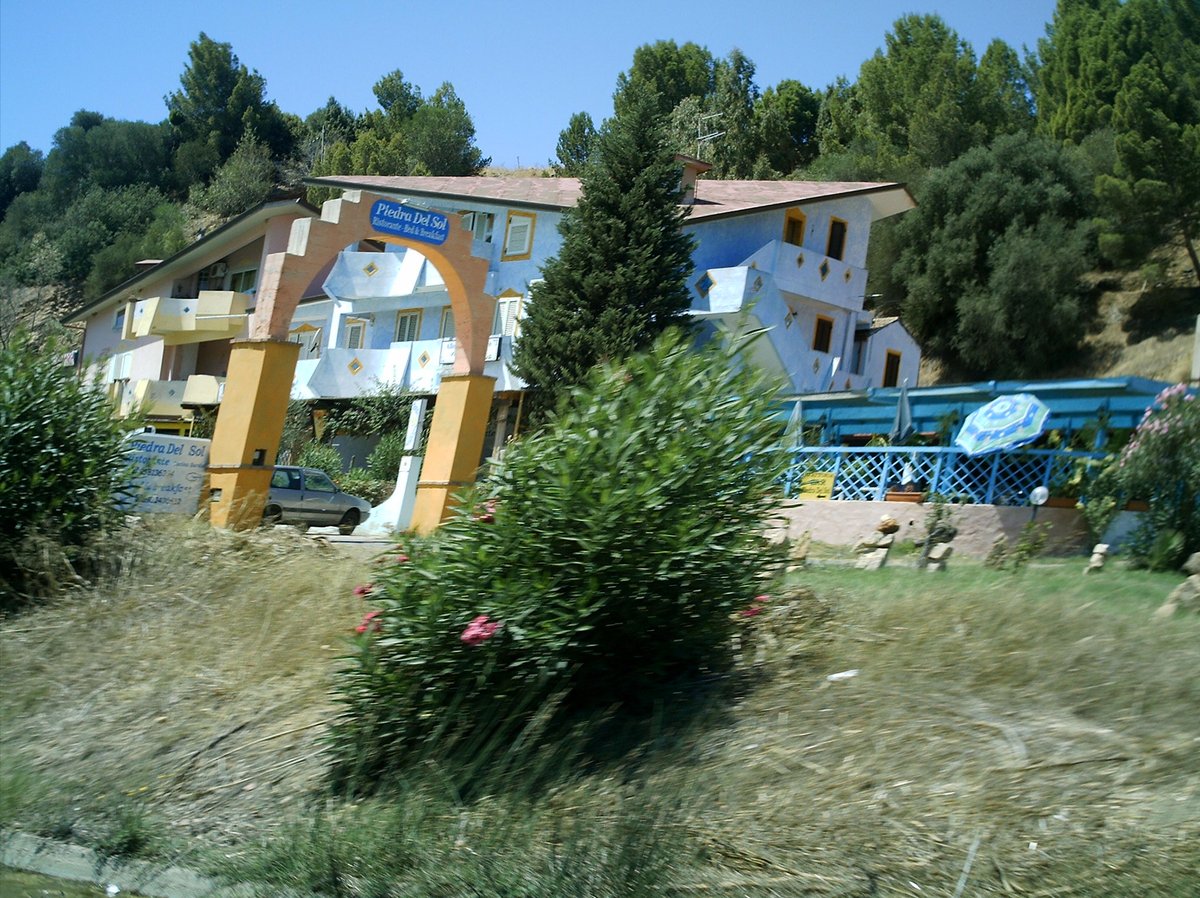
**Sardinian FABRICS and fabrication**
Thread about the art of weaving in Sardinia and two traditional fabrics: orbace and bisso.
📸 Textile from Oristanese
Thread about the art of weaving in Sardinia and two traditional fabrics: orbace and bisso.
📸 Textile from Oristanese

Weaving, spinning, embroidery were exclusively female activities. The men would only cut the wool from the sheep or help with transport.
Weaving and spinning are activities with a deep symbolic meaning, from spinning the thread of life to building a work of art, that is the -
Weaving and spinning are activities with a deep symbolic meaning, from spinning the thread of life to building a work of art, that is the -
-fabric, on the loom as analogy to writing someone's life. That's why fabrics have so many meanings and symbols built within their own structure, not something that can be done or removed afterwards, like embroidery.
Several types of fabrics were used in Sardinia but the main-
Several types of fabrics were used in Sardinia but the main-
-type was sheep wool. The cutting of the wool was a big celebration for the community, with many people coming to help and ending in days of feasts. Then it was time for the women to take up their job.
The wool was washed and then carded, that is brushed with two brushes. This-

The wool was washed and then carded, that is brushed with two brushes. This-


-allowed to divide longer hair from the shorter. The hair was then rolled into a distaff and spun by hand. Spinning was the kind of activity to be done everywhere, in any free moment. Women would spin together sitting outside the door, at the well or in front of the fire. 





Then the thread was gathered in yarns with the spinning wheel, and its more rural predecessors. The dyeing of the wool was also done by women, first with purely natural (vegetable) substances and only in later time with aniline.
It was finally time for weaving. Every girl knew-
It was finally time for weaving. Every girl knew-
-how to weave. It was one of the fundamental activities for every woman in a family: weaving for all the members' clothing, and selling if it was in excess.
Most looms were horizontal but in some places of Barbagia we can find older, vertical looms. After putting in place the-


Most looms were horizontal but in some places of Barbagia we can find older, vertical looms. After putting in place the-



-warp, the weaver would pass the threads of the weft with the spool and repeatedly compress the threads. Decoration was done with the addition of coloured threads through the lines of the warp. The different techniques were applied with a couple of pedals which would swap- 

-the threads of the warp.
There are many recurring motives in Sardinian textiles, often depending on the town. We can find pictures of animals, especially birds and horses, people, women and men dancing the Sardinian dance but also geometric effects.


There are many recurring motives in Sardinian textiles, often depending on the town. We can find pictures of animals, especially birds and horses, people, women and men dancing the Sardinian dance but also geometric effects.



One of the most famous productions is the carpet of Nule ⬇️ with its peculiar inserted decorations in the shape of flames.
Particularly requested were long pieces to cover the traditional wooden boxes or the "bag" for men, called bertulas. They were sacks with two large pockets-

Particularly requested were long pieces to cover the traditional wooden boxes or the "bag" for men, called bertulas. They were sacks with two large pockets-


The orbace is the fabric made entirely of Sardinian sheep' wool and used mostly (dyed in black) for the male dress but it could also be used for some female skirts.
The other typical and peculiar fabric is bisso, thread created with the product of a particular kind of bivalve-

The other typical and peculiar fabric is bisso, thread created with the product of a particular kind of bivalve-


-mollusk of great dimensions, which uses it to tie itself to the rock. Bisso is very precious, with a particular golden tone, and we have popes asking for it to the local kings since early Middle Age. It is typical of the area of Sant'Antioco, the only place where it's still- 



-worked. There's only one woman in all Sardinia who knows how to work with it and the only one who still produces it. It's the woman in the second picture, Chiara Vigo.
📸 Women from Sant'Antioco spinning bisso, Chiara Vigo

📸 Women from Sant'Antioco spinning bisso, Chiara Vigo


• • •
Missing some Tweet in this thread? You can try to
force a refresh





















